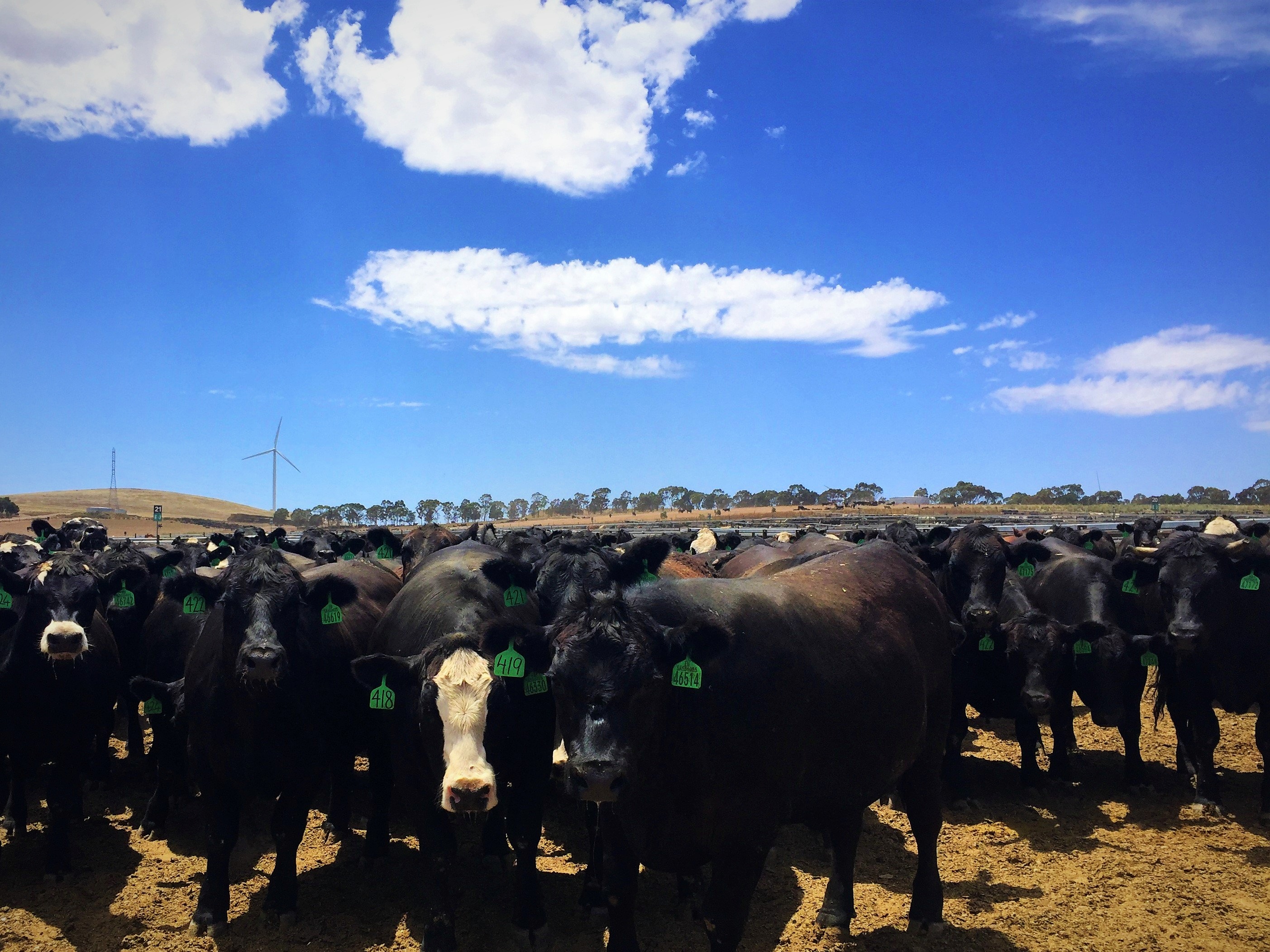.jpg?width=700&height=394&name=Low-Stress%20Cattle%20Handling%20(1).jpg)
It can take many years of experience to master the art of cattle handling. Animal welfare is a priority in the livestock and feedlot industries and a big part of that is how people interact and handle livestock.
Research has shown that livestock that are highly stressed generally will have a lower production value. This means that they tend to take longer to recover from handling, put on less weight, are more likely to injure themselves or a handler.
It is often more beneficial for the producer to employ low-stress techniques, it is best for the livestock and safer for the livestock handlers.
Handling stock with minimal stress takes a thorough understanding and knowledge of cattle behaviour. How cattle react and interact with handlers can vary dramatically depending on their previous experience, temperament, nutrition and health and noticeably how the handler is behaving toward them.
For example, if a handler is very loud, makes sudden movements and an animal had had a previous bad experience entering the yards, it will most likely be difficult for the handler to move and will be stressed during the entire experience. Cattle will remember their bad experiences and their behaviour will reflect that in anticipation of another bad experience.

Handlers should aim to impose the least amount of stress on cattle as possible and should not aim to make them exceedingly fearful of people. In doing so, handlers should aim to move them using minimal stress techniques. Minimal stress techniques have both the health and welfare of cattle and the safety of the handler at precedence.
It is often said that the livestock can sense the stress or frustration of the handler and will behave accordingly. So, it important to remain calm when handling livestock to avoid the cattle demonstrating a reluctance toward the handler.
Cattle are not all the same, some are more fearful than others. These cattle will tend to put more distance between them and the handler and may be more difficult to control.
The distance that cattle put between them and a threat is known as the flight zone, when a handler moves into the flight zone the animal will try to maintain the distance and move further away. When a threat moves out of their flight zone they will slow or stop depending on the distance. This is how handers manage the pace of an animal or mob.
Cattle distinguish humans and working dogs as a threat and will respond accordingly. Understanding their behavioural tendencies can be key to low stress handling. Handling cattle should always be undertaken with care, as cattle can be very dangerous.
Our top 10 tips to improving your low stress handling:
- Watch and assess the behaviours and temperament of the cattle before attempting to move or handle them. If they seem particularly flighty don’t try to move them alone,
- Do not approach cattle from directly in front or directly behind,
- Try to keep calm, move slowly and only make noise when necessary,
- Keep direct contact with the livestock to a minimum,
- Install low stress, fit-for-purpose facilities,
- Try not to make many obvious sudden movements,
- Aim to keep cattle moving at a steady walking pace, not running or bolting as it is too easy to lose control of the animal or mob,
- Cattle are herding animals and will mob together, encouraging this will improve their stress levels,
- Avoid excessive handling. Try not to constantly push them through a race or be continually in their flight path,
- Aim to be as efficient as possible, only handle cattle when necessary and give them time to recover from the experience.
These are just some of the many low-stress techniques that we use here at Princess Royal and would encourage any livestock producer to implement.
Keep these tips in mind and try to work with the cattle, rather than against them. Calm livestock are easier, more efficient and safer to handle.
If you found this article interesting and want to learn more about how we care for our livestock click here. Or check out our blog link below.

